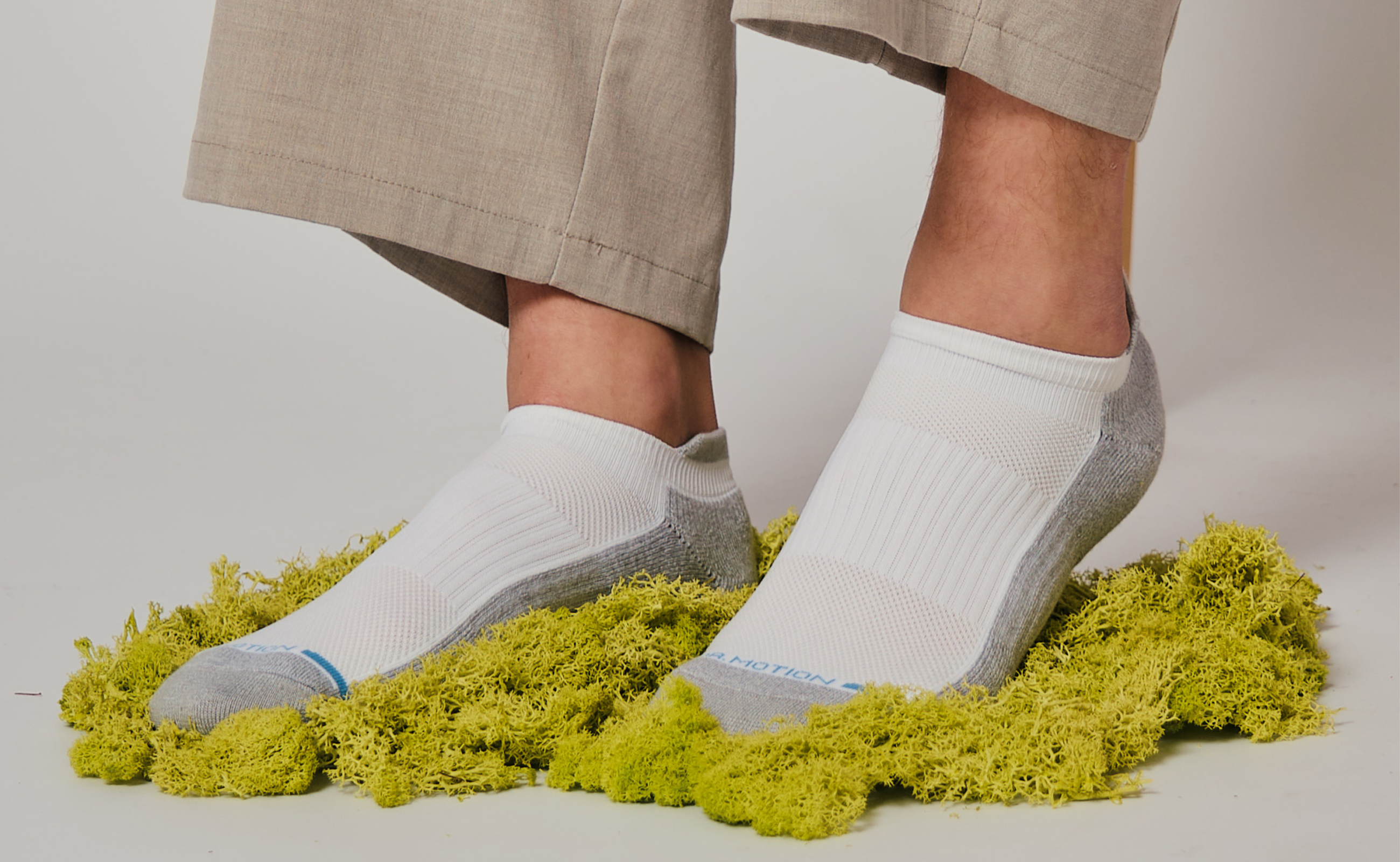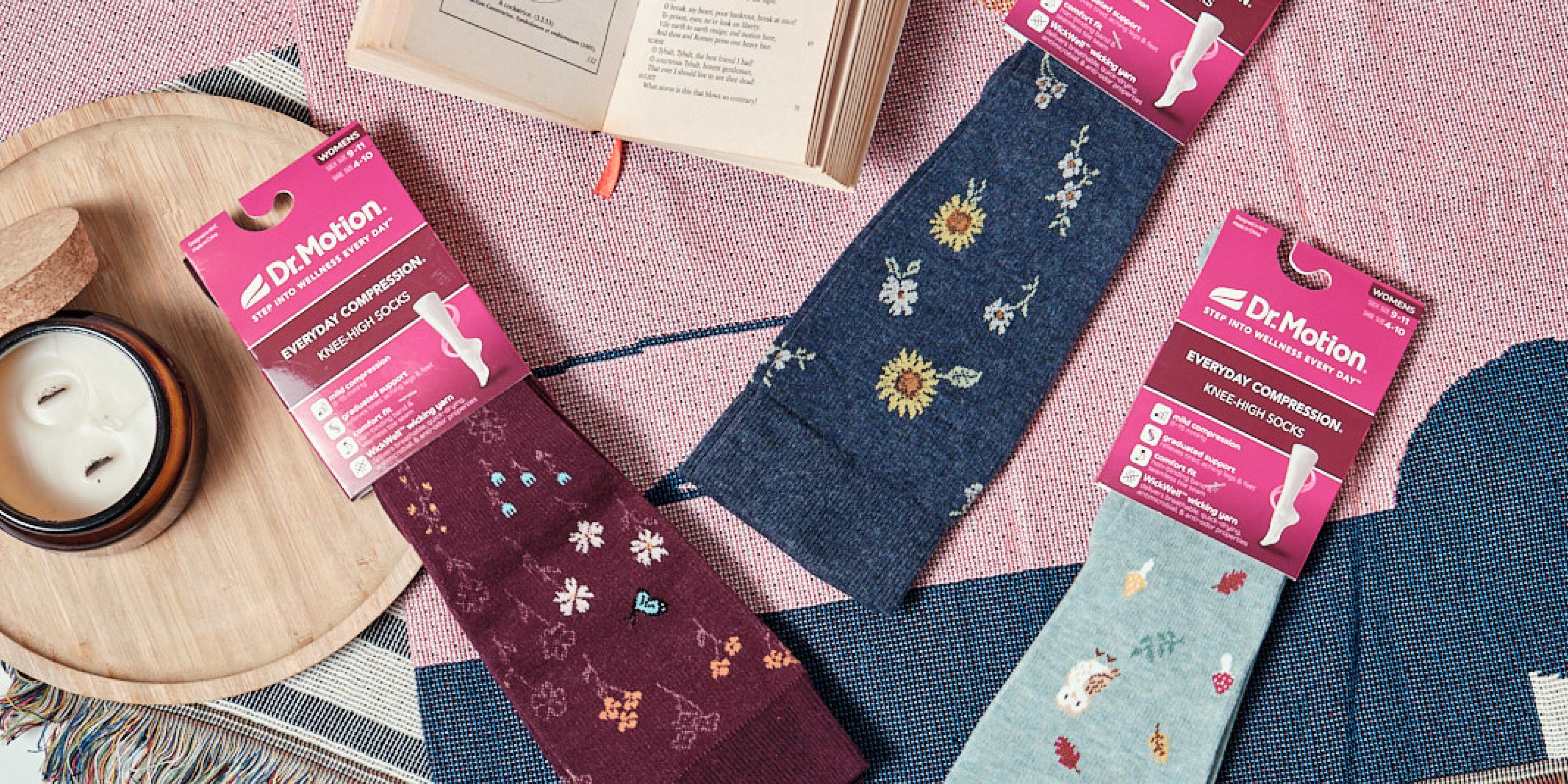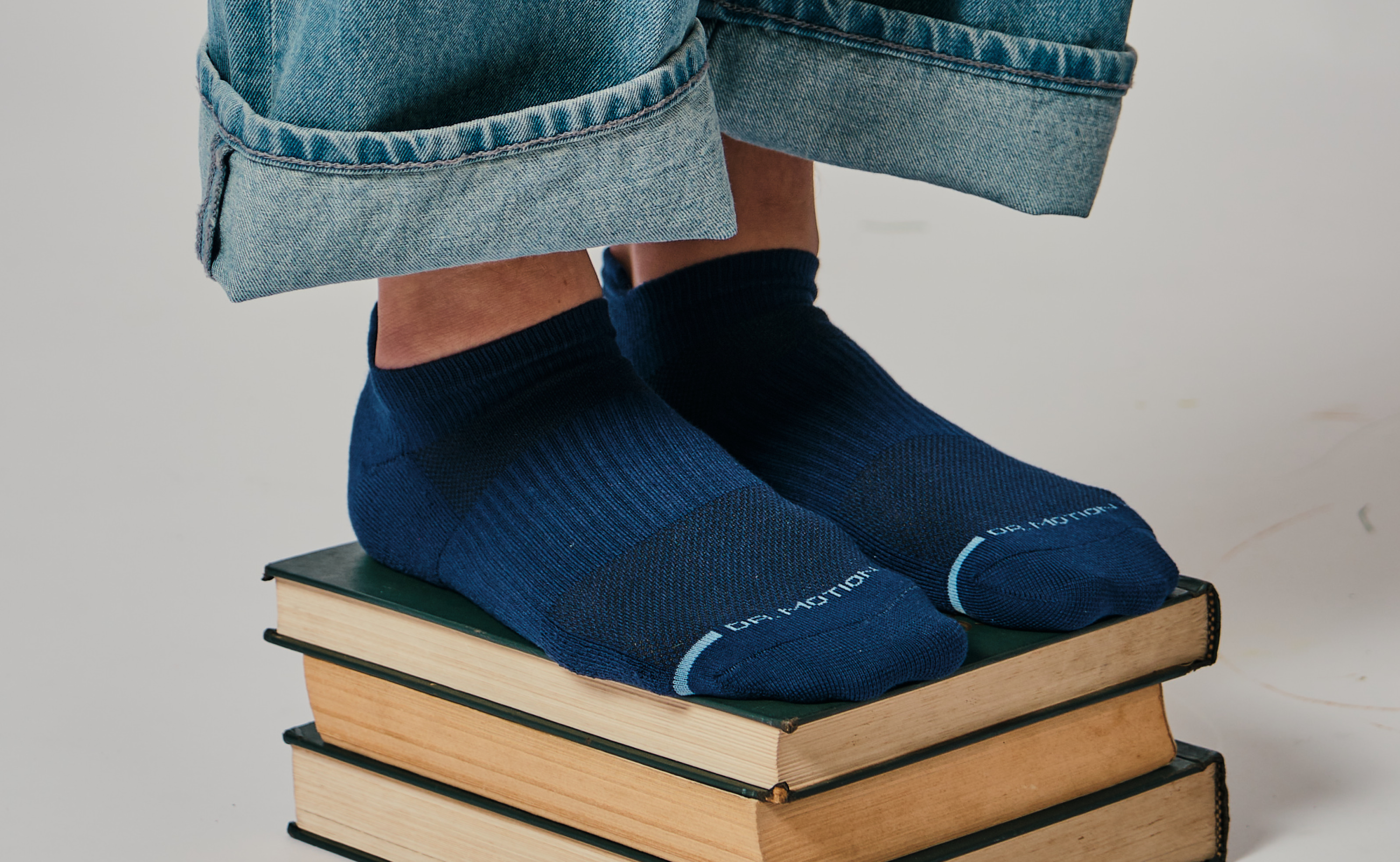Are Your Compression Socks Providing the Right Amount of Compression?
Choosing the right compression socks is not difficult to do. It helps to know how much pressure (or mmHg) on your legs are needed to assist in increasing blood flow. At the same time, too much pressure can result in undesirable side effects like redness, swelling or a tingling sensation in your feet. Avoid these problems by following a compression guide that lists the best mmHg for compression socks, and by considering how the compression socks feel after wearing them for hours. While working from home, the right compression socks can leave you feeling energized throughout the day.
Best mmHg for compression socks
The greater the mmHg of pressure listed for a pair of compression stockings, the tighter they will be. These millimeters of mercury (mmHg) is the same measuring scale used when taking a person's blood pressure. Some compression socks have a uniform pressure that is the same from ankle to the top of the calf, while others will have graduated pressure.
When doctors prescribe medical-grade compression socks for patients, it is generally a “high-level compression,” that can range from 30-40 mmHg to 40-50 mmHg. These stockings are prescribed for severe swelling and are usually worn under medical supervision. For all day wear they would probably be uncomfortable, too tight and may cause swelling instead of reducing it.
What level of compression socks do I need?
The average person will not need a high level of compression for daily wear or when worn for 8 hours or more. It can be too tight for comfort or pleasure. Consider graduated compression socks with light to medium pressure. The right compression socks for every day, non-medical needs should be 15-20 mmHg or 20-30 mmHg if you have a job that requires standing all day.
Most people choose mmHg compression that best fits their needs or activity. Here is a quick compression guide for choosing the best level of compression that will reduce the chance of side effects such as swelling:
- Flying on an airplane - 8-15 mmHg
- General everyday wear - 8-15 mmHg
- Pregnancy or varicose veins - 15-20 mmHg
- Standing long hours at work - 20-30 mmHg
- Long endurance athletics - 20-30 mmHg
- Doctor recommended or post-surgical - 30-40 mmHg
Extra-firm, compression socks at 40-50 mmHg graduated pressure should only be worn when prescribed by a medical professional.
Signs of compression socks that are too tight
When you wear compression socks, they should never cause pain or discomfort. The first sign of wearing compression socks that are not designed properly is when the upper band is cutting into the upper calf. This can restrict blood flow from the heart to the feet and legs. The best compression socks are designed to aid in blood circulation, and not hinder blood flow.
Another side effect that your compression socks are too tight is when you begin to experience swelling in the lower legs. This can be remedied by using a lower pressure sock or a graduated compression sock. A graduated compression stocking will help blood flow upward toward the heart instead of pooling downward into the feet or ankles. This will help prevent the primary cause of swelling when wearing compression socks.
If someone is bedridden and wearing compression socks to assist in blood flow, check to make sure there is no redness, swelling, or pain below the knee or at the ankles. Persons of low activity can benefit from the right compression socks because they can be instrumental in preventing blood clots or DVT.

Takeaways
- The best compression socks should never cause pain, swelling or discomfort
- For jobs that demand standing for long hours, consider medium pressure 20-30 mmHg
- High-pressure compression socks are only worn when advised by a medical professional
Visit Dr. Motion or at your favorite retailer for compression socks that are best for everyday wear.
Disclaimer: This article provides information solely for educational purposes, including but not limited to text, graphics, images, and other materials contained herein. This article is not intended to substitute for professional medical advice, diagnosis, or treatment. Always seek the advice of your physician or another qualified healthcare provider with any questions you may have regarding a medical condition.












